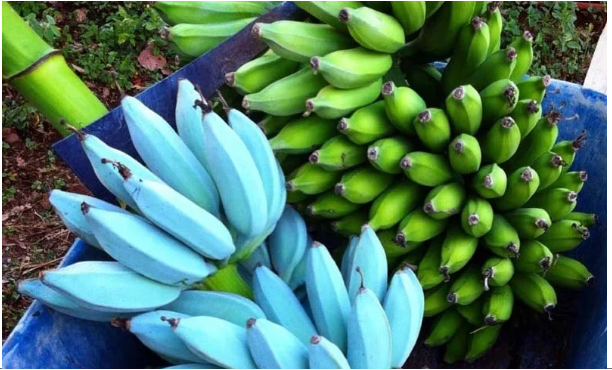The Blue Java, affectionately known as the “blue banana,” stands out not only for its stunning bubble-gum-blue peel but also for its unique qualities. While blue is not a common color in nature, this banana variety grows in humid and sunny regions like Fiji, the Philippines, and Southeast Asia, displaying remarkable resilience by thriving in temperatures as low as -7°C.
Despite its unconventional appearance, the Blue Java is a natural fruit. Renowned for its delicious vanilla taste, the pale yellow flesh surprises sweet tooths with a smooth texture, earning it the nickname “ice cream banana” in Hawaii.
This extraordinary banana variety is creating a buzz on social media, with growing enthusiasm for its mouthwatering and distinctive blue color. Due to climate change and evolving weather conditions, there’s potential for the Blue Java to be cultivated in new zones, expanding its availability.

The trend of blue foods extends beyond bananas, encompassing blue tomatoes and blue apples. The OSU Blue tomato, developed in the early 2000s, boasts blue skin when grown in specific humid climates. Meanwhile, the blue apple, native to the forests of Australia and Tasmania, presents purplish-blue fruits with a flavor reminiscent of apples.
Even vanilla joins the blue foods revolution, with the blue vanilla from Reunion Island. Although its name suggests a blue hue, it is, in fact, not blue in color. This exclusive variety, offered by Escale Bleue, undergoes a six-year refining process for a limited edition with a subtle aroma. The “blue” in its name pays homage to Reunion Island locals who historically described a healthy plant as “blue.”
As the fascination with blue foods grows, these unconventional varieties serve as a testament to the diversity and surprises found in the natural world, encouraging exploration beyond traditional expectations.


